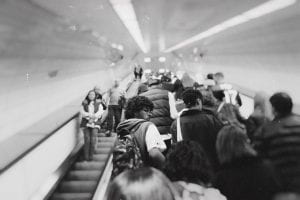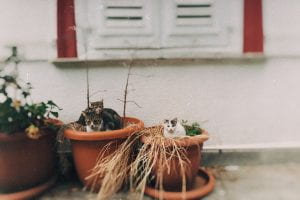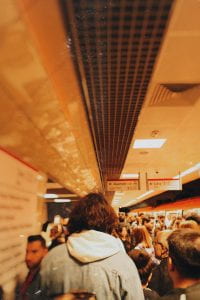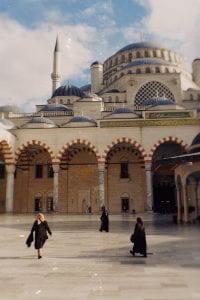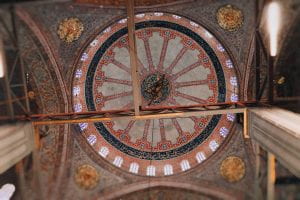Creative essay written by Jericho Leavitt
 Loading...
Loading...
Creative essay written by Jericho Leavitt
 Loading...
Loading...
Riding over 4000-meter passes on roads built and paid for by oil, we drop into the cloud forest. Volcan Antisana beckons for a closer look, before once again drifting behind the clouds illumined in the last of the evening’s light that pours from the west. Tequila shot stops at the kayaker’s beloved guesthouse in Baeza morph into a winding, cascading, pothole-infested road down into the high jungle and the headwaters of the Amazon rainforest. Foreigner and potentially unwittingly naïve I have flown, driven, and descended into one of the most environmentally and politically contentious places in our world.

Environmental lawyer, Steven Donzigner was held under house arrest for 993 days in his New York apartment under false contempt of court charges, for not turning over his personal computer. The trial was completely bought by Chevron with paid lawyers and an appointed judge who is a personal beneficiary of Chevron’s global oil atrocities. It took Donzigner, a journalist turned lawyer, 25 years to gather the evidence and funding to prosecute Chevron for its massive environmental and human rights violations in the Northeastern Ecuadorian Amazon. The lawsuit they brought successfully against Chevron in Ecuador’s Highest courts, fought to bring 18 billion dollars to the Cofan Indigenous peoples, predominantly those in the Aguarico river basin, who saw the first and most drastic impacts of the intentional oil disaster. The suit was then reduced to 9 billion dollars, chump change for a multiple trillion-dollar multinational corporation. in a more than 20 years trial, and four years after the prosecution Chevron still hasn’t paid a dime, it is cheaper to pay 60 high-level lawyers from the biggest and most corrupt law firms in the United States for a proxy trial against the small underfunded American lawyer in the case, than it is to pay the bare minimum for environmental cleanup.
 Rio Jondachi, Napo Ecuador – a dam has been proposed to completely dewater the river here.
Rio Jondachi, Napo Ecuador – a dam has been proposed to completely dewater the river here.
At home in the Nooksack Watershed, the landscape has already been so altered that it is difficult to understand what has happened; a 250-year process of ecocide, genocide, and colonial development that has completely reconfigured the land and water of the Nooksack River drainage. Here now in the Sacred Headwaters of the Amazon, we pass by a lot of hundreds of parked excavators used to dig for minerals in the Rio Napo, Rio Anzu, and Rio Juntun Yaku, all rivers that flow near the quickly developing city of Tena. In an eddy, I catch Diego yelling out to me over the noisy rapids, “low water was never an issue here… but now the water, the sun it soaks it all up or something”. I looked at him and nodded in understanding, the Nooksack river of my home had been the lowest I had ever witnessed the last few days before my departure. Everywhere on earth our climate is changing. We proceeded to go down the rocky jumbled river, passing over manufactured spillway dams for water diversion that had created dangerous hazards in the river.

Now en mi nueva vida I cruise the streets in Tena Ecuador, a town that has grown into a bustling economic hub in the Napo province. Just a few hours by car from here is the location of these massive oil atrocities that have caused skyrocketing cancer rates from old to young. As the oil resources dwindle, and many people fight to protect what is left of the Amazon in Ecuador, a new crisis arises in the sacred headwaters. Mineria (mining) has gone into full swing in Napo and throughout eastern Ecuador, illegal and legal. Swaths of rainforests are being clearcut and overturned, with mercury used to distill each mineral, mostly lithium and gold. These mines have begun to pour mercury and arsenic into the rivers here.

March! Speak up! Napo Resiste!
Mineria es Muerte!
Mining is death!
We march through a city that less than thirty years ago was a small village in the rainforest.

The jungle seems to never sleep. I follow Diego’s steps cautiously with the faint moonlight that shines through the canopy. We are walking into the Llangantes National Park, the largest conserved land mass in Ecuador. It stems from high in the Paramo down into the steep and inaccessible (unless by kayak or helicopter) high rainforest. In the darkness comes an overwhelming and complex sense of anxiety, I feel so deeply exposed to all lives that are present here… there are many. Five deadly venomous snakes to be exact. As the fresh daylight rings, he cares to mention that the whole path we were walking on in the forest was the perfect snake habitat. By now my senses are far too overstimulated to care, we are off trail working our way crawling, wrestling, and hacking through the deep undergrowth along the Jatun Yaku River. The only people who travel into the jungle here are Kichwa locals looking for gold upstream or illegal miners. Everyone fears the miners. Diego and I have come in search of a relatively small side creek that seems via satellite images to offer a tremendous waterfall that cascades into the Jatun Yaku.

The rains have finally come, and the metal roofs vibrate with ferocity all night as I toss and turn under its thundering. With rain comes more opportunities to explore the countless rivers in this area that are proposed for large mining and hydroelectric projects. It has been an intense first month here in the rainforest.
Extending a massive thank you to the people who are actively connected and intermingled in the work to come back to a place of sanity, care, and of respect for the land and water of the Nooksack. Keep up the fight, the walk, the love, the friendship, the kayaking… You all give me so much hope!
Resources:
https://theintercept.com/2022/04/27/deconstructed-steven-donziger-chevron-ecuador/
The first few weeks in Istanbul. Arriving and settling into the foreign, winding world of the city. I moved in with a Turkish man I’d never met for 2 weeks before he had to leave for mandatory military service. It is a big transition, and much of my time has been spent wandering the city, taking buses and ferries and the metro, writing, reading, drawing, and connecting with new people.
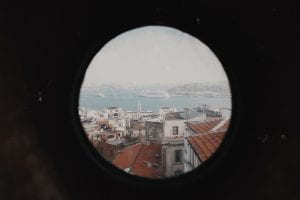
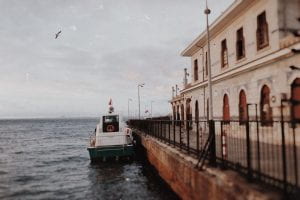
As a couple weeks have passed, I am feeling more comfortable here. The cry of gulls and police sirens mixes with the call to prayer, blurred noises against a blurred skyline. Looking out at the city lights and the curving sky along the Bosporus that cuts continents away from each other and connects the Black Sea to the Sea of Markus to the Aegean to the Mediterranean and beyond. The absence of comfort and the comfort of absence in the biggest city I’ve ever been to. 15 million official population, but closer to 20 million.
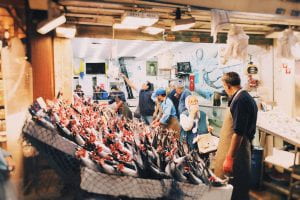
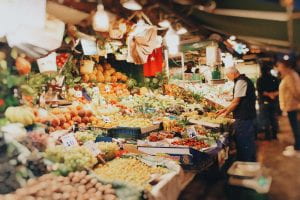
There is a dove nesting along the brick in the open air shoot on one edge of the apartment, this is her third try. The first clutch never hatched, second hatched but died, now she tries again as fall creeps over the city. Out across the Bosphorus, old neighborhoods and new buildings, skyscrapers stretched out like a ruined spine across the landscape. Smell of salt and garbage wafting from the ocean. Paw prints in the dust along the rooftop, rain drenched and crow feathers, wet brick and tile roof. In the park in the morning the dogs chase a cat up a tree.

When it rains the neighborhood is swaddled in grey, bathed in polluted rain water coloring the orange bright orange and the grey dark grey. The gulls fluff themselves up against the damp in the chimneys and a Coca Cola truck rolls down the street at the end of my ally.
Along Galata bridge, hundreds of men with fishing poles cast out between the ferries and barges, gulls flocking and flying, cigarettes half as common as fingers. Wandering the market streets, fish and fruit vendors, a haunch of a cow in a wheelbarrow, tilted into a metal shoot in the ground. Smell of salt, spice, sweets, fish, fruit, garbage, incense, mud, and shit. Riding the ferry as the sun sets out over hundreds of cargo ships coming to port. Sitting in the water like great metal insects. No wings. Sprawling city.
I have been trying to orient myself to the project I proposed, though it has changed already before arrival and as I get to know the place just a little. I have connected with some organizations that work with displaced people, and hopefully will have volunteer opportunities beginning soon, either here in Turkey or in Serbia. It can be challenging to independently feel capable of doing the project in the way I want, so connecting with organizations feels like a good support and accountability system to begin with. For now, I have been researching the migration of refugees into Europe – learning about the EU’s border policies, the increased funding of military and security operations, and the externalization of the EU’s borders through third entity countries. Here is an quick summarization of some of my initial research into the topics:
“The EU and it’s neighboring countries border regimes (primarily in and around the Balkans) are responsible for systematic, violent, and illegal pushbacks of migrants. The Border Violence Monitoring Network (BVMN) released a report in December 2020 detailing 892 testimonies from 12,654 people that were pushed back from the borders of Austria, Italy, Slovenia, Croatia, Hungary, Greece, & Bulgaria. 90% of these testimonies reported the use of violence. Other abuses reported include forced undressings, police spray painting crosses on peoples heads, and Muslims being forced to burn the Quran.
These push backs are illegal and violate the European Convention on Human Rights. While the European Court of Human Rights has condemned the pushbacks and some investigations into Frontex (European Border and Coast Guard) have begun, there have yet to be consequences or signs of reform from the EU Member States and their responsible agencies. Meanwhile, the EU is increasing funding to security and military operations at its local and externalized borders.
The EU’s 2021-2027 budget has drastically increased funding to security, defense, and border protection. Frontex will be provided with unprecedented €5.6 billion, a 194% increase from the previous budgetary cycle. This funding will expand their role to oversee member states’ use of EU migration funds and develop its ‘standing corps’ of 10,000 border guards.
Along with the increase in funding, Frontex and EU Member State governments have begun to defend themselves when confronted with evidence of pushbacks using questionable legal grounds. This is of concern to human rights defenders, who fear that the EU will move toward legalizing pushbacks, particularly since a European Court of Human Rights ruling in 2020 which said that, under certain circumstances, Spain had the right to use push backs.
Overall, the takeaway is that the EU is increasing the funding to border police, engaging in illegal and violent pushbacks, and moving toward a more authoritarian and anti-immigration standpoint.”
Sources:
Aulsebrook, Gigi, et al. “Pushbacks on the Balkan Route: A Hallmark of EU Border Externalisation.” Pushbacks on the Balkan Route: a Hallmark of EU Border Externalisation | Forced Migration Review, Forced Migration Review, Nov. 2021, https://www.fmreview.org/externalisation/aulsebrook-gruber-pawson
Radjenovic, Anja. “Pushbacks at the EU’s External Borders – European Parliament.” Pushbacks at the EU’s External Borders, European Parliment, Mar. 2021, https://www.europarl.europa.eu/RegData/etudes/BRIE/2021/689368/EPRS_BRI(2021)689368_EN.pdf
Jones, Chirs, et al. “At What Cost? – Statewatch.” At What Cost? Funding the EU’s Security, Defence, and Border Policies, 2021–2027, Statewatch, Apr. 2022, https://www.statewatch.org/media/3272/at-what-cost-eu-security-budgets-2021-27-sw-tni.pdf
Protecting Rights At Borders. (n.d.). Human dignity lost at the EU’s – prod.drc.ngo. Retrieved October 22, 2022, from https://prod.drc.ngo/media/rzplexyz/prab-iii-report-july-to-november-2021_final.pdf
If you’re interested to learn more about migration politics in Europe and the EU and incidents of border violence, check out the sources above, The Border Violence Monitoring Network: https://www.borderviolence.eu/ and Collective Aid: https://www.collectiveaidngo.org/
Here are a few more photos from the first weeks, and if anyone is interested to see more they can be found here: https://vsco.co/manyghostss/gallery Overall, things are good. I am settling into the place and the project, making connections, and finding opportunities beginning to arise.
